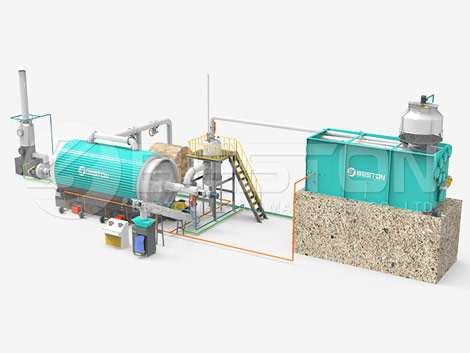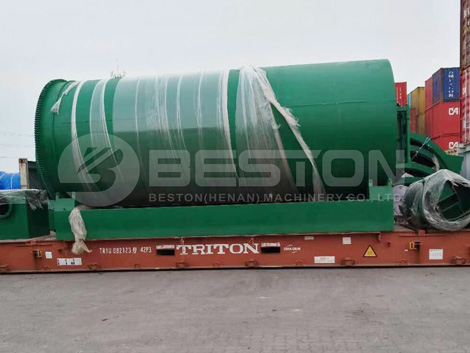With the advent of pyrolysis plants, it’s now possible to make fuel oil using outdated tires. The tire pyrolysis plant will first process the tires in its reactor, followed by converting them into oil that you can use as fuel in cars and the steel wire industry.
Working principle of a tire pyrolysis plant
The working principle of a tire pyrolysis plant involves the reactor heating waste tire and rubber and converting them into oil gas. In the next step, a condenser coverts the oil gas to generate liquid oil. You can use this liquid oil in various industries and in your car as fuel. One of the advantages of this oil is that it won’t react with the condenser while recycling, thus ensuring that the plant is able to make the most of its recyclable energy.

How does the plant work?
In addition to worn-out tires and rubber, you can also use waste plastic as raw materials. The plant would melt the ingredients before processing them into fuel. Here’s how the plant works:
1. The first step involves feeding the raw materials into the reactor. Most plants contain an automatic feeding machine. You need to pour the raw materials into this feeding machine and let it send them into the reactor slowly. Make sure there is enough space in the reactor for the materials to turn and twist properly. It’s better to keep approximately one-third of the reactor empty to allow it to grind everything. See the small pyrolysis machine here.
2. In the second step, the plant will heat the reactor so that it burns the waste tires and plastic. This would eventually produce combustible fuel. As soon as the chamber in the reactor reaches 100o C, it starts releasing oil gas. Since the oil gas is heavy, it would separate itself slowly and reach the condenser in the next chamber.
The condenser is another crucial part of the plant that liquefies the oil gas and ensures that it drops into a tank underneath. On the other hand, the lighter gas slowly rises to the top of the condenser and liquefies later. This means the plant doesn’t leave any residue once you feed all the raw materials. If there is any non-condensable gas left, it reaches the desulfurization system where the furnace connects with the plant and sends the gas for recycling. Get high quality pyrolysis machine here.

3. Once the oil tank underneath the condenser collects the oil, it has to cool down so that it can provide the fuel oil you need. The temperature has to come down to at least 40o C. This also allows the carbon black to automatically discharge from the reactor.
4. The last step involves purifying the non-condensable gas. It has to go through several purification stages in the smoke cleaning system so that it later produces fuel oil. You will notice that it attains the emission standard set by the government.
One of the reasons why a tire pyrolysis plant is so popular is that it leaves almost zero waste after every cycle. Most importantly, it recycles waste tires that people would otherwise burn, which would, in turn, lead to air pollution. Check out the pyrolysis plant cost here.